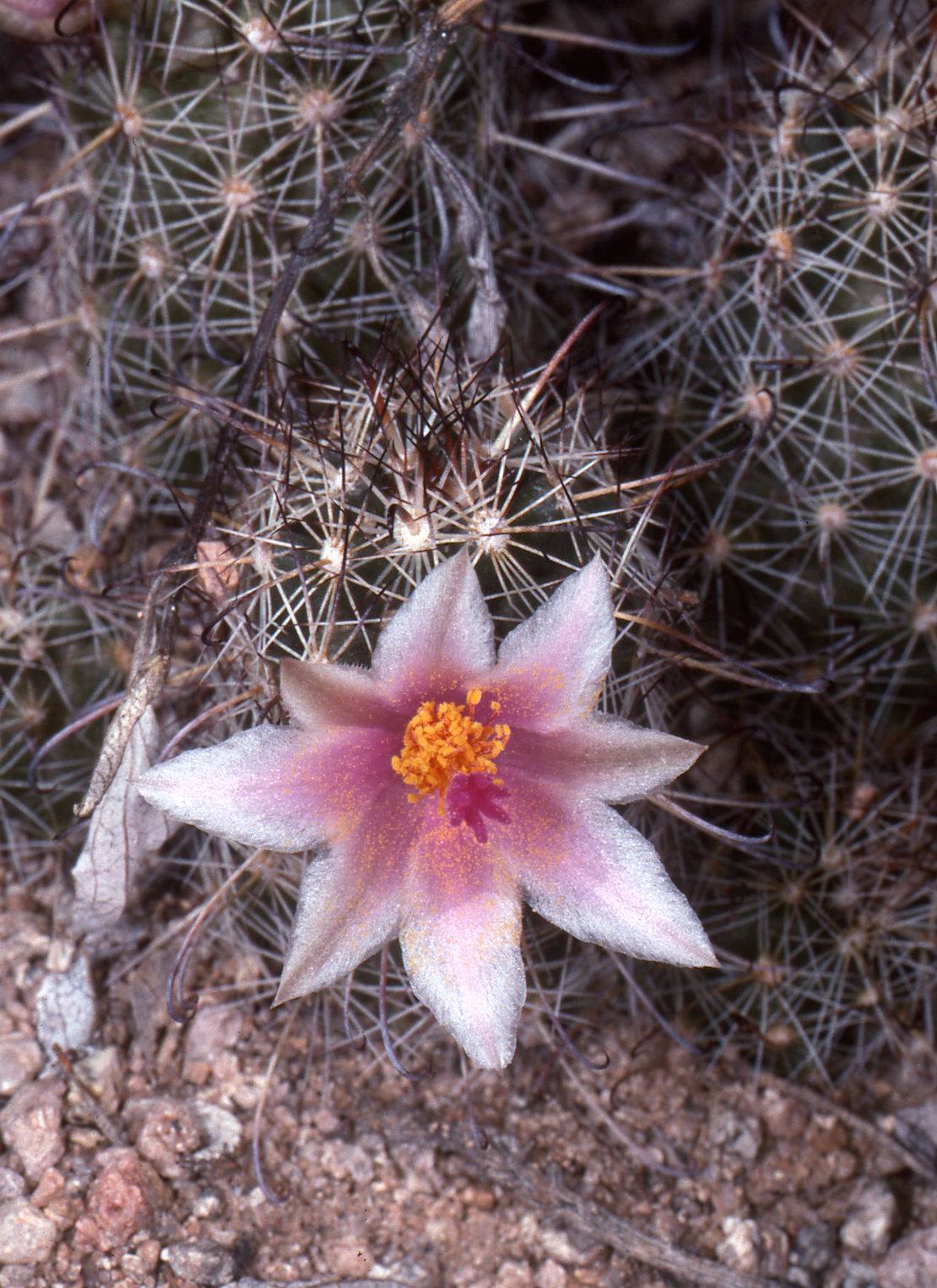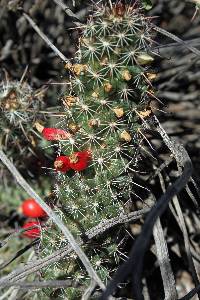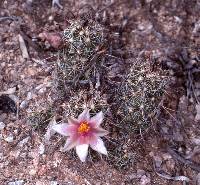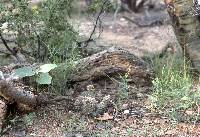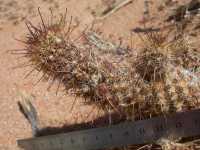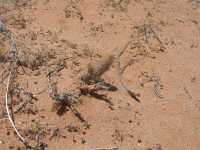
|
|
|
|
Family: Cactaceae
Thornber's Nipple Cactus, more...Thornber pincushion, clustered fishhook cactus, clustered pincushion, Thornber pincushion cactus (es: biznaguita)
|
Plants branching prolifically from base, every branch with independent root system, connections to rest of clone ephemeral, resulting in dense clumps of independently rooted stems. Roots diffuse, upper portion not enlarged. Stems slender cylindric, 4.5-10(-30) × 2-3.5 cm, tapered at base, firm; tubercles 5-9 × 5-9 mm; axils appearing naked; cortex and pith not mucilaginous; latex absent. Spines 14-22(-23) per areole, whitish to yellowish near base, pale reddish brown to nearly black toward tips, glabrous; radial spines 13-21 per areole, whitish, with reduced dark tips relative to central spines, bristlelike, 5-9 × 0.16 mm, stiff; central spines 1(-3) per areole, porrect, hooked, (7-)9-18 × 0.16-0.45 mm; subcentral spines 0(-3) per areole, adaxial to central spines, ± transitional to radial spines. Flowers 1.5-3 × 1.2-2.5 cm; outermost tepal margins densely short fringed; inner tepals white or pinkish with bright rose-pink midstripes, 14-19 × 5-7 mm; stigma lobes magenta, 3-6 mm. Fruits bright red, obovoid to nearly clavate, 7-15 × 4-7 mm, juicy only in fruit walls; floral remnant persistent. Seeds black, 0.9-1.1 × 0.8-1.1 × 0.7 mm, pitted; testa hard , brittle; anticlinal cell walls straight (not undulate); interstices conspicuously wider than pit diameters; pits bowl-shaped. 2n = 22. Flowering Apr-May, Jul-Aug; fruiting Oct-Nov, Feb-Mar. Sonoran desert scrub, valley floors, under shrubs, silty or sandy soils; 400-600 m; Ariz.; Mexico (Sonora). The epithet fasciculata was long misapplied to Mammillaria thornberi; it correctly pertains to Echinocereus fasciculatus (Engelmann) L. D. Benson. Mammillaria thornberi is in the Center for Plant Conservation´s National Collection of Endangered Plants.
Benson 1982, FNA 2003 Common Name: Thornber's nipple cactus Duration: Perennial Protected Status: Salvage restriced status in Arizona, but is in the Center for Plant Conservation's National Collection of endangered plants. General: Plants branched prolifically from base with every branch having an independent root system, the plant is found in dense clumps of independently rooted stems with stems that are slender and cylindric while tapered at base and firm, they are 4.5-10 cm tall by 2-3.5 cm in diameter, there is no latex and the tubercles are 5-9 mm long and wide. Spines: Spines tend to obscure the stem, with 14-23 per areole, these whitish to yellowish near base and reddish brown to black towards the tips, the 13-21 radial spines are whitish with reduced dark tips relative to central spines, the 1-3 central spines are porrect and hooked with 0-3 subcentral spines, the adaxial to central spines are more or less transitional to the radial spines. Flowers: Flowers are 1.5-3 cm long by 1-2.5 cm in diameter with the outermost tepal margins densely short fringed while the inner tepals are lanceolate and white or pinkish with rose-pink midstripes, the tepals 14-19 mm long and 5-7 mm in diameter. Fruits: Fruits bright red and obovoid to nearly clavate, 7-15 mm long by 4-7 mm wide, juicy only in fruit walls while the floral remnants are persistent. Ecology: Found on sandy or fine soils under shrubs of flats and washes (akaline tolerant), usually in Sonoran desert scrub, on valley floors from 500-2,500 ft (152-762 m), flowers April-May. Notes: Considered rare in many counties in Arizona. FNA states that the epithet fasciculata was long misapplied to M. thornberi; it correctly pertains to Echinocereus fasciculatus. Ethnobotany: Specific use of species is unknown, however the genus was used as food by many native American tribes, the spines were removed or the plant skinned and the flesh of the plant was eaten, sometimes raw. Etymology: Mammillaria comes from the Latin mammilla, a nipple, while thorberi is named for John James Thornber (1872-1962) an American plant collector. Synonyms: None Editor: LCrumbacher, 2010 |
This project was made possible in part by the Institute of Museum and Library Services [MG-70-19-0057-19].
Powered by Symbiota

